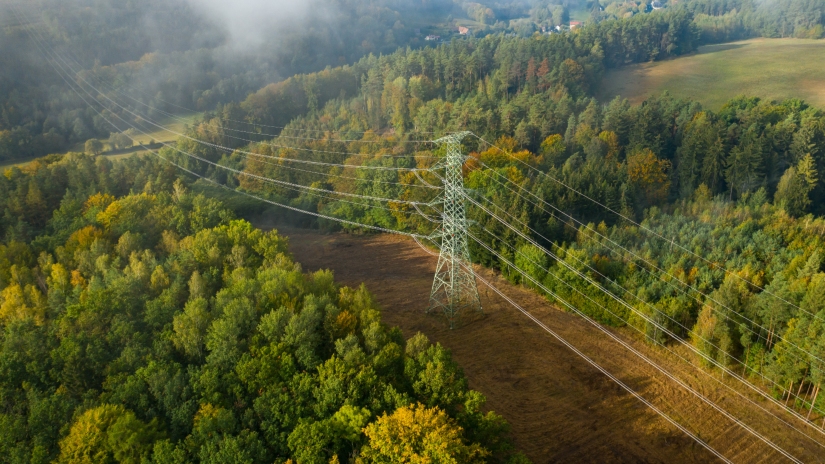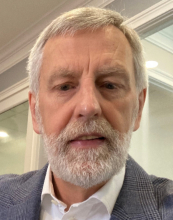By Roger Rosenqvist, Vice President of HVDC Business Development, Hitachi Energy; and
Etienne Veilleux, HVDC Business Development, Hitachi Energy, Canada.
Public-private collaboration is critical in addressing the climate crisis. On the public side, laws, regulations and incentives go a long way toward establishing and supporting sustainability targets. But the responsibility for achieving those targets often falls to private companies. Although new tools and technologies are emerging, many with a game-changing capacity to reduce or even eliminate carbon emissions, the problem of electricity transmission has been a major obstacle to expansion of renewable resources. Perhaps that is about to change.
An ambitious project in New York is setting a high bar for public-private partnership in the energy sector, using unique technology from Hitachi to solve the problem of bringing sustainable energy generated hundreds of miles away into a high-demand population center.

The state of New York’s Climate Leadership and Community Protection Act has set a target for the state to be powered by 70% renewable energy by 2030.1 Historically, the state has been reliant on traditional, thermal energy sources such as gas and oil, which can easily adjust their power output in response to changes in electricity demand. But most renewable energy sources, such as wind and solar, are not able to respond as quickly to changes in demand and power output from such sources vary intermittently based on climatic conditions. Providing renewable energy on demand requires a means of storing this energy for later use or sharing it between different regions — both of which require reliable means of transmission, sometimes across hundreds of miles.
The challenge for New York was finding suitable renewable power that’s well-positioned for the transfer of renewable energy to and from the state. Because Quebec relies almost entirely on hydro-electric generation, the province has the infrastructure and capacity necessary to provide baseload renewable energy deliveries and storage capabilities to its neighbor to the south. During periods when solar and wind generation in New York exceeds the local demand for renewable energy in the state, excess energy can be exported to Quebec to serve electric loads that would otherwise be supplied by hydro-electric generation.
The state needed an environmentally responsible means of transmitting reliable renewable power between Quebec and New York City, the state’s largest load center. High Voltage Direct Current (HVDC) Light® transmission technology, originally developed by Hitachi Energy, is providing that means — enough to power up to one million New York homes.

The Champlain Hudson Power Express (CHPE) link between Quebec and New York City leverages the unique capabilities of the HVDC Light technology, including its flexibility to be deployed over long distances underground and underwater, to bypass legacy transmission bottlenecks and meet the growing demand for clean power.
The solution eliminates several difficulties that utilities encounter with transmission systems based on alternating current (AC) technology. For example, insulated high-voltage DC cables only carry a temporary charging current during initial energization of the circuit and, therefore, can be employed for power delivery over any distance underground or underwater. Thus, by employing HVDC, many of the siting and permitting difficulties companies face with traditional AC above-ground wires, including public concerns with unsightly transmission towers, can be addressed by constructing new transmission lines entirely underground in existing infrastructure corridors or underwater. In contrast, insulated high-voltage AC cables carry continuous alternating (60 Hz) charging currents that increase in magnitude with increasing cable length. Therefore, traditional high-voltage AC technology is not conducive to long distance underground and underwater construction since the charging current alone will utilize all of the capacity of the cable when it reaches a critical length.
Also, since the power frequency in an AC line produces an alternating magnetic field, placing AC transmission lines in existing infrastructure corridors, such as railway lines, can create unacceptable interference with signaling systems. HVDC Light technology eliminates such problems by converting the power to DC, which does not have any alternating magnetic field, and then converting the power back to AC at the receiving end for delivery to the local utility company for distribution to homes and businesses.
As a New York City mandate requiring the installation of electric appliances comes into force, demand for electricity in the city will grow. With HVDC Light’s ability to promote resource diversity and support overall resource reliability, the CHPE system will enable NYC to better meet this increase in electricity consumption.
HVDC Light further supports the state’s climate goals by maintaining a low environmental impact, and its converter stations have a relatively small footprint that facilitate construction in a densely populated urban environment, such as New York City. Also, the CHPE project is expected to create 1,400 jobs from the construction phase through the first 30 years of operation, bringing an estimated $50 billion in economic benefits to New York state. The impact of the project is projected to be equal to removing 44% of passenger vehicles from the city.2 And because this implementation covers such a large population, it serves as a model that can be adapted to the needs of additional metropolitan areas, and in fact is being used in a similar project in Mumbai, India.
The complexities of meeting the climate crisis challenge around the world require expertise and capacity that spans the public-private spectrum. The private sector must make a long-term commitment to the development and distribution of renewable energy to meet public sustainability initiatives, and that can be accomplished only via partnerships between private companies and public entities. Hitachi’s work on the CHPE system reflects the company’s commitment to deploying innovative technologies to achieve social good by making it feasible to achieve critical sustainability goals.
To see Hitachi sustainability solutions in action, explore our Social Innovation case studies.

Vice President of HVDC Business Development, Hitachi Energy
Roger Rosenqvist is Vice President of HVDC Business Development and Sales at Hitachi Energy in Raleigh, North Carolina. He joined the company in Sweden in 1980 and has since held numerous positions in engineering, systems design, power systems consulting, project management and HVDC business development in Sweden, Canada, and the United States. Roger has a Masters’ Degree in Electrical Engineering from Chalmers University of Technology in Gothenburg, Sweden.

HVDC Business Development, Hitachi Energy, Canada
Etienne has expertise and years of experience in the field of power electronics as it is applied to electrical transmission and distribution grids. He has specific knowledge and expertise in the specialized fields of high voltage direct current (“HVDC”) and flexible A/C transmission systems (“FACTS”). As part of his engineering background, Etienne has performed numerous power system studies and system design of power transmission and distribution systems. Part of the Hitachi Energy’s HVDC business development team, Etienne is now working with customers to propose and adapt HVDC solutions that support their transmission projects that will help transform the North American power grid with clean energy that can easily be moved from region to region.